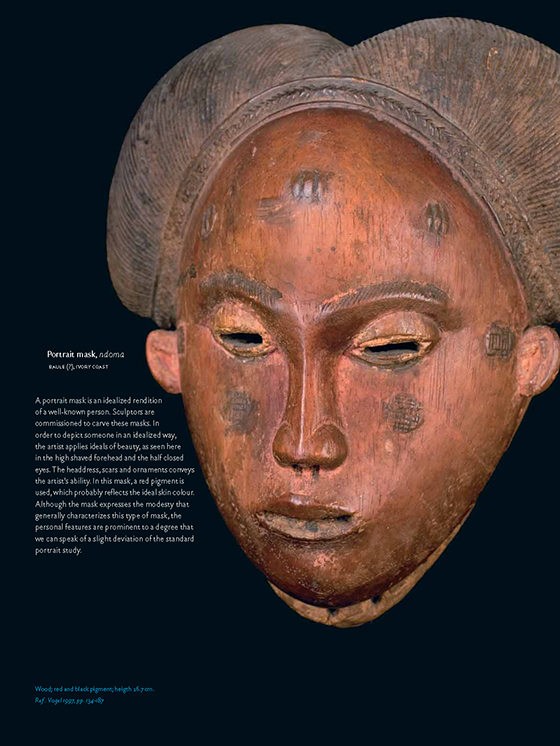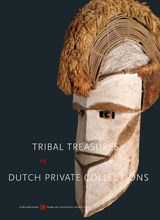Tribal Treasures in Dutch Private Collections, een magnifiek, gebonden boek van kloek formaat waarin maskers, beelden en andere kunstvoorwerpen uit Afrika, Indonesië en Melanesië op wetenschappelijk verantwoorde wijze gecatalogiseerd worden. Het Afrika Museum in Berg en Dal exposeert tot begin volgend jaar een deel van de afgebeelde etnografica. Het boek is volledig Engels- en Nederlandstalig en bevat essays en toelichtende tekst van Siebe Rossel, Arnold Wentholt en Frans Ellenbroek. Alle objecten worden uitgebreid besproken en afgebeeld in de catalogus. Een groot deel van de objecten (alle uit privé-collecties) is nooit eerder afgebeeld. Een citaat uit het boek:
Look at these masks, look at these little statues. Take a deep breath and experience the secret strength and pure beauty of them. That’s why the members of the Tribal Art Collector’s Society have been collecting this fine and astonishing art with so much passion, for 25 years now. They are proud to show now these tribal treasures to the public. To you…
Mask, kifwebe
Luba, Democratic Republic of CongoCock mask. This is a recent innovation dating from the 1970s and originating from the eastern Luba. Natural pigment enlivens the stylized head, which is painted in the traditional colours white, red and black. Again, the traditional kifwebemask served as a model.
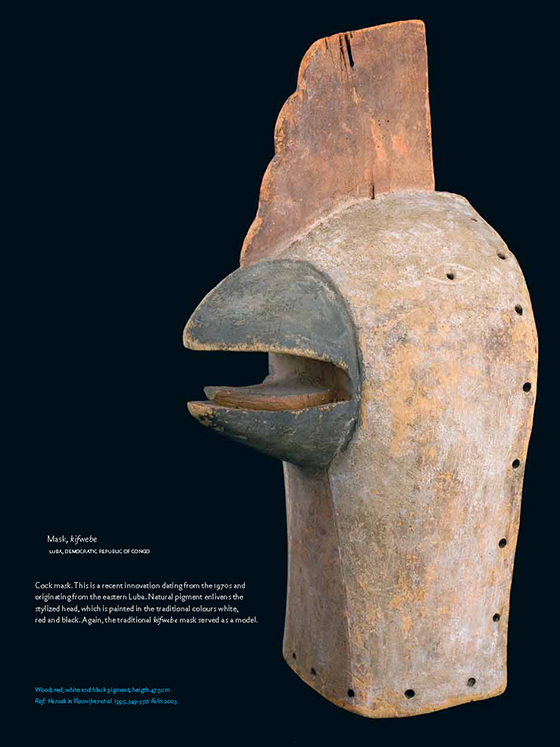
Mask
Mano/Gio (dan), Liberia and GuineaMasks with a remarkably detailed physiognomy are difficult to divide into categories. The plastic representation of the facial features marks this example as a portrait mask. Portrait masks were made to commemorate individuals, who in the recent past had occupied a prominent position within the community. Portraying a living person also occurred. Once the mask is ready to perform, the spirit is present and receives the name of the person who is portrayed. The portraits were given a special task within the mask tradition of the Poro and other societies, in which the personal qualities of the portrayed person returned to life.
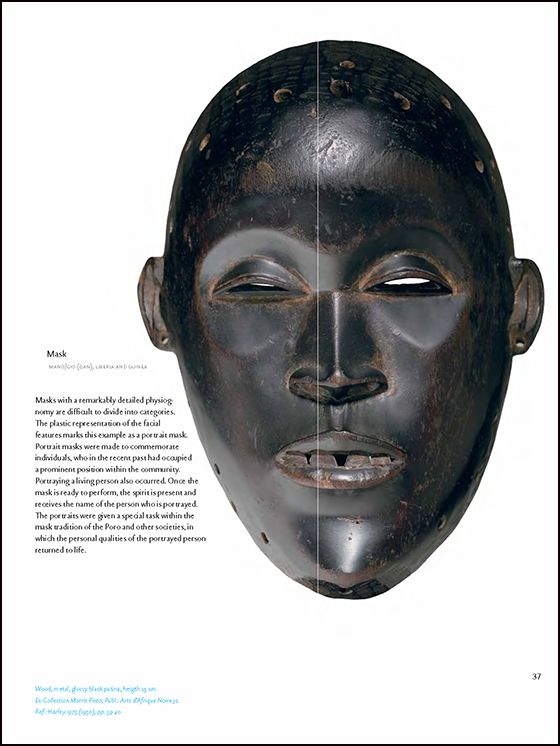
Mother and child
Mende, Sierra LeoneThe Poro and Sande societies of the Mende cover justice and social life. Other associations focus on the remedy of mental and physical complaints. In the past, such societies used statues representing a female in consultations. Such a female was generally depicted without feet. Statues of mother and child are rare. They were possibly made for special counseling
in order to enhance fertility and pregnancy. The statue shows a seated woman with a child lying across her lap which she supports with both hands. The statue has round, plastic shapes and displays the Mende beauty ideal such as a high forehead, a reduced face, a high swept coiffure and strands of hair falling in cascades and a long neck with fatrolls. This hair dress was fashionable in c.1900 among women of the elite.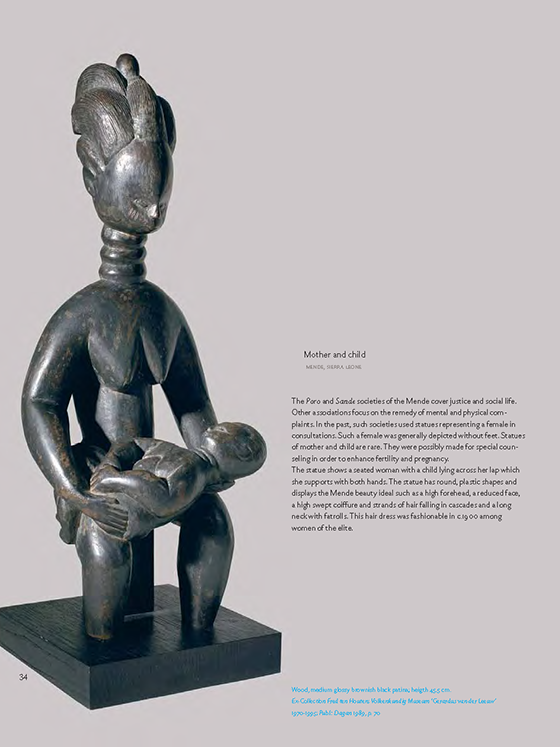
Portrait mask, Ndoma
Baule (?), Ivory CoastA portrait mask is an idealized rendition of a well-known person. Sculptors are commissioned to carve these masks. In order to depict someone in an idealized way, the artist applies ideals of beauty, as seen here in the high shaved forehead and the half closed eyes. The headdress, scars and ornaments conveys the artist’s ability. In this mask, a red pigment is used, which probably reflects the ideal skin colour. Although the mask expresses the modesty that generally characterizes this type of mask, the personal features are prominent to a degree that we can speak of a slight deviation of the standard portrait study.
